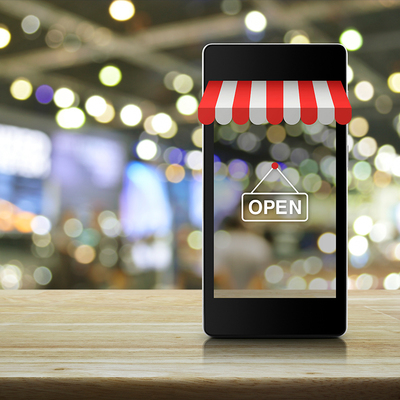Boyden's Dough Ehrenkranz explains why its crucial for B2B marketing to remain on the cutting edge of digital marketing trends since it’s not going away any time soon.

My recruiting practice spans both B2C and B2B companies and most functions including marketing. Within marketing, a disproportionate share of my recruiting assignments is focused on digital marketing.
Since the moment digital marketing was determined to be more than just a passing trend, innovations in the digital marketing landscape have been developed at a near blinding pace. Keeping up with every new trend and differentiating between true game changers and flashes in the pan is difficult enough for full-time digital marketers, let alone those who count digital marketing as a mere aspect of their job.
Despite this challenge, it is crucial for B2B marketing to remain on the cutting edge of digital marketing trends since it’s not going away any time soon. Being a first adopter of an incredible new piece of digital marketing tech could edge you in front of your competitors but determining the right investment can get a bit overwhelming.
Hopefully, this list of B2B marketing best practices for 2017 will give you some ideas on how to innovate your digital marketing strategy and bring you into 2018 way ahead of the game.
Three B2B Marketing Best Practices Worth Developing
1. Marketing Automation
You’ve probably heard of marketing automation―a digital marketing buzz word for years― but if you poll B2B marketers, you’ll likely find few people who really know how to use it and even fewer who know how to use it effectively.
In B2B marketing, automation is an invaluable tool when used effectively. It can not only save you a ton of time designing and scheduling countless email campaigns, it can also increase your client and prospect engagement by hitting the targets inbox at the right time with the right message.
For those not fully in the know, marketing automation essentially sets up a network of email triggers and responses that vary based on an individual’s initial reaction to an email.
So, for instance, say you send out a welcome email to 100 people using marketing automation. If one person clicks on a link in the email, you have a timed email trigger to follow up with more information about your company, automatically keeping that person engaged. If another person ignores the email outright, you can have a timed trigger to send them a follow-up to try to re-engage.
2. Account-based Marketing
Knowing where to start when putting together your B2B marketing plan is often the most difficult obstacle to overcome. There are so many ways to reach your target audience but which will prove most effective?
Within B2B marketing, there are two main schools of thought: developing buyer personas to focus on specific types of prospects or focusing less on individuals and more on the groups of clients that make up specific accounts as a whole.
The second approach is called Account-based Marketing (ABM) and is an extremely popular marketing strategy for B2B marketers looking to acquire specific accounts.
The most important thing to remember about ABM is that it’s an appeal to collective decision making. More often than not, companies make big decisions in groups, so why wouldn’t you gear your marketing to the group as a whole rather than individuals within that group? It’s much easier to make the sale when all of the influencers in a group know your name rather than just one or two.
The legwork of a successful B2b marketing ABM strategy lies in the research and execution. Identifying your target account and developing quality content with them in mind requires a near-comprehensive knowledge of their likes and dislikes so using behavioral data from any and all available resources is key. Using the advanced people search function of LinkedIn to determine the top influencers in an organization, post-email campaign reporting, and online behavior such as the things they post about on social media are all viable sources of information to be used for a deeper understanding of your target client.
From there, it’s a matter of channeling that knowledge into custom curated pieces of content that play to their interests and then getting them to engage with it. The aforementioned marketing automation tool is a great way to get them engaged, but the content creation is on you and your team.
3. Personalization
When looking through a cluttered inbox, don’t you just wish you could press a button and have all of the emails that are of no interest to you disappear? Well your clients and prospects do too. That’s why email personalization is becoming more and more important.
I’m not talking about dynamically adding someone’s name into your header, either. I’m talking about sending individuals on your email list content that’s specifically relevant to them on a consistent basis.
A task like that would seemingly take a team of marketers and researchers identifying the likes or dislikes of your email recipients and developing content to appeal to their sensibilities, but―thanks to a great new piece of marketing tech―the process is much less labor intensive than it seems.
Using tools like an email preference form gives recipients an opportunity to select only the content they want to see, giving you clear insight into their intentions. But simply knowing their interests is not enough. You must be able to deliver content based on these interests in an efficient way.
There are two ways to go about this. The first is by developing audience personas based on the most popular preferences your audience has chosen. When segmenting your audience based on these personas and developing content geared toward these somewhat generic segments, your audience will be much more likely to engage since they will see that on some level you personalized your content for them.
The second option is a great piece of marketing tech often called a content distribution system. Usually run by your email service provider, the content distribution system takes info from your audience’s interaction with your preference form and automatically fills and sends out pre-designed emails with content corresponding to their expressed interests. When using a content distribution system effectively, every individual receives only the categories of content they find interesting so they will never be disappointed by your communications.
The main issue is this technology is relatively new and isn’t always called a content distribution system but, if you’re interested, ask your email service provider if they offer this type of technology.
These are just a few B2B marketing trends that seem to be really catching fire in the industry, so if you want to take advantage, the sooner the better. Good luck out there!




